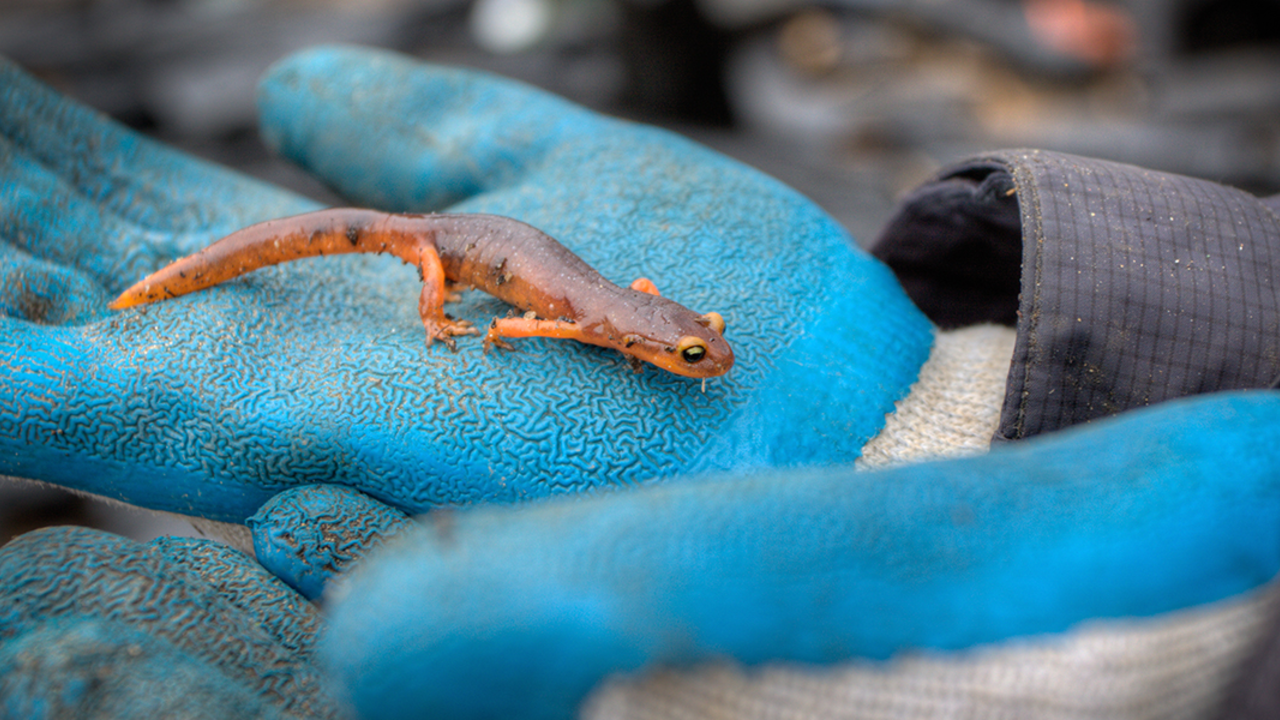How the Enigmatic Ensatina Sheds Light on “Species”

Maria Durana/Parks Conservancy
On a misty day during a walk through Muir Woods, I saw a small brown and orange salamander. It was a brief look, and I am a poor herpetologist, but I suspect it was an Ensatina—or Ensatina eschsholtzii to those with a systematics bent—that occurs in habitats from coniferous forests to chaparral in the Pacific states.
Ensatinas spend their time largely under logs and in moist places, where they mostly eat insects, spiders, earthworms, and other “bugs.” These salamanders are fascinating for a number of reasons, but are famous in biology circles as a textbook example of a ring species.
Before I get into the definition of a ring species, let me back up. Last month, I started to discuss the complexities of the idea of a species. First, the commonly used definition for a species is a group of organisms that can produce viable offspring. A horse and a donkey can produce a mule, but mules are not fertile, therefore horses and donkeys are separate species.
In the wild, however, populations of organisms are continuously diverging when gene flow is low or stops, and moving back together when genes flow between them. If populations separate for long enough with little or no gene flow, they will speciate—one species will become two—as changes accumulate between the populations over time. Knowing where to draw the artificial line to define a new species is challenging—and the charismatic Ensatina highlights this problem beautifully.
A ring species is one whose distribution is generally in the shape of a circle (or ring), often due to physical or geographic constraints; in the case of Ensatina, that ring is the mountains and forests surrounding California’s Central Valley. Ensatina occurs along the Pacific coast as far north as British Columbia all the way south to Baja California. (Click on image at left to see larger map.)
Moving south from Canada, Ensatinas slowly changed their pigmentation. When they hit the Central Valley, Ensatinas split around it, with some populations following the Coastal Range and some staying in the Sierra Nevadas. As they expanded southward along the mountain ranges, each arm changed little by little—but they have changed in very different ways. Our local Ensatina is orange underneath and brownish above. In contrast, south of Lake Tahoe, Ensatina is a mottled brown and orange.
Eventually, the two arms of Ensatinas meet in southern California. By the time they rejoin in southern California, however, the Ensatinas from each arm had changed enough from each other that they generally could not, or would not, interbreed. In other words, they were as different as any two species should be.
If you were to sample them along the ring, it is clear there is a continuum of interbreeding individuals—thus they remain one species. However, two neighboring populations in southern California are quite different and if a biologist encountered one of each without knowing the species’ full distribution, she would surely call them different species.
This little salamander very neatly demonstrates how complex evolution can be. It also shows, with surprising clarity, how the idea of a species is merely a human construct borne out of our desire to categorize the world. But nature eschews our black-and-white views of the world in favor of creating beautiful shades of gray. As you begin your summer travels around California, be on the lookout for Ensatinas and notice how much variation you can see.
